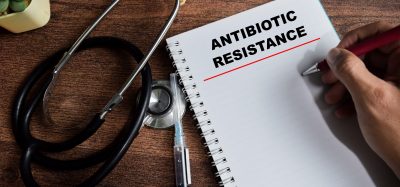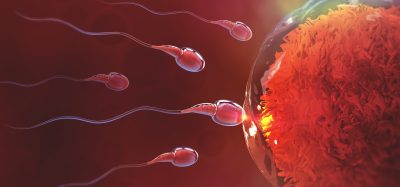Is hydroquinine the answer to antimicrobial resistance?
Posted: 10 November 2022 | Izzy Wood (Drug Target Review) | No comments yet
In this exclusive Q&A, Dr Robert Baldock, Research Scientist at the University of Portsmouth, discusses the compound hydroquinine and how it could be used as an effective weapon against a pathogen that causes serious infections in humans, mostly hospital patients.


University of Portsmouth, UK scientists analysing the effects of the organic compound hydroquinine have discovered how it inhibits and kills a bacteria with antimicrobial resistance that causes serious illness or in some cases death.
If we know this drug is working in a different way, it explains why it is active on these drug-resistant cells, but it also means that you can look at combining it with other existing antibiotics to make them more effective”
Hydroquinine, often found in the bark of some trees, was recently found to have bacterial killing activity against Pseudomonas aeruginosa and several other clinically-important bacteria, including Staphylococcus aureus, Escherichia coli and Klebsiella pneumoniae.
The study, published in Antibiotics, revealed hydroquinine significantly alters the expression levels of virulence factors Pseudomonas aeruginosa: a bacteria, often found in hospital patients, that can lead to infections in the blood after surgery. It also suggests the compound interferes with the assembly and movement of the bacteria.
Biomarkers aren’t just supporting drug discovery – they’re driving it
FREE market report
From smarter trials to faster insights, this report unpacks the science, strategy and real-world impact behind the next generation of precision therapies.
What you’ll unlock:
- How biomarkers are guiding dose selection and early efficacy decisions in complex trials
- Why multi-omics, liquid biopsy and digital tools are redefining the discovery process
- What makes lab data regulatory-ready and why alignment matters from day one
Explore how biomarkers are shaping early drug development
Access the full report – it’s free!
The team have now explored the molecular responses of Pseudomonas aeruginosa strains to hydroquinine. They did this by looking at which genes were switched on and which were switched off in response to the drug.
Drug Target Review’s Izzy Wood, exclusively interviewed Dr Robert Baldock, School of Pharmacy and Biomedical Sciences, University of Portsmouth, about the effects of the organic compound: hydroquinine, on drug-resistant bacteria.
When asked: What interesting findings did you uncover when looking into hydroquinine’s properties against drug-resistant bacteria?
Baldock commented: “Previously, we identified that hydroquinine-treatment led to an upregulation of efflux pumps in Pseudomonas aeruginosa which can be associated with drug-resistance.
Despite this, hydroquinine was effective, although this could lead to future resistance. By targeting these efflux pumps, it may be possible to pre-emptively reduce the risk of resistance, or even make hydroquinine more effective at lower doses against this bacterial strain.
Many traditional antibiotics target key processes in bacteria – cell wall synthesis, protein synthesis and DNA replication. Fascinatingly, we found the hydroquinine appears to target bacterial cell motility and other factors influencing virulence. This could explain why hydroquinine remains effective against a drug-resistant strain of Pseudomonas aeruginosa.
“Crucially, targeting bacterial motility (and synthesis of motility factors) could be a suitable future strategy for disabling certain bacteria.”
Antimicrobial resistance
Drug-resistant bacteria occur in more than 2.8 million infections and are responsible for 35,000 deaths per year. Antimicrobial resistance happens when germs change over time and no longer respond to medicines, making it difficult to treat infections.
Amoxicillin and Trimethoprim are commonly prescribed antibiotics that certain strains of Pseudomonas. aeruginosa have become resistant to. Hydroquinine is already known to be an effective agent against malaria in humans, and it is also being used in the Netherlands to treat nocturnal muscle cramps. Until now there has been little investigation into its drug-resistant properties.
Baldock continued: “There is quite a long list of antibiotics that do not work on Pseudomonas. aeruginosa, but our experiments found some of the genes governing the motility of the bacterium were quite drastically switched off by hydroquinine. Biofilm formation and the swarming and swimming of the germ were significantly reduced”.
“If we know that this drug is working in a really unique or different way then it firstly explains why it is active on these drug-resistant cells, but it also means that you can potentially look at combining it with other existing antibiotics to make them more effective.”
NEWS: Study reveals how hydroquinine kills major drug-resistant bacteria…
When asked: what challenges did you face when undertaking your experiments? How did you overcome these?
Baldock answered: “It was really exciting to see that hydroquinine showed killing activity against a range of clinically relevant bacteria (including a multidrug resistant strain of Pseudomonas aeruginosa).
Despite this, the real challenge was to determine why hydroquinine was able to target this bacterium. In addition, we did not know which genes controlling virulence were affected by hydroquinine.
By using next-generation sequencing, we were able to take an unbiased look at global changes in gene expression in response to the compound. The finding that flagella related genes were negatively affected guided later experiments looking at the motility of Pseudomonas aeruginosa”.
Nontaporn Rattanachak, Ph.D. student at Naresuan University added: “We uncovered that hydroquinine could reduce the motility and communication ability of Pseudomonas aeruginosa both drug sensitive and multidrug resistant strains. Our new findings could be potentially used in developing alternative antibacterial compounds in future”.
What does the future hold?
Dr Jirapas Jongjitwimol from Naresuan University said: “Antimicrobial resistance has become one of the greatest threats to public health globally, so to discover an organic compound has the potential to be used as an effective weapon in the fight is very exciting.
“We now need to look at how the compound works against a wider variety of bacterial strains so that we better understand why some germs are affected or not affected by it.”
Crucially, targeting bacterial motility (and synthesis of motility factors) could be a suitable future strategy for disabling certain bacteria”
Following the next steps to look at how the compound works against a wider variety of bacterial strains, Baldock elaborated on future plans: “After categorising the effectiveness of hydroquinine against other microorganisms, we will also look for any signs of toxicity in cultured human cells at varying doses. If this continues to show promise, we hope to look at strategies to translate this discovery into clinical practice”.
He concluded that “Due to a ‘discovery void’ of new antimicrobial drugs, it is paramount that we seek to discover, and most importantly, translate these new compounds from benchtop to bedside – so that currently treatable infections do not become life-threatening. I am excited to see where this research goes next and whether new classes of antibiotics will be discovered by harnessing naturally occurring compounds”.
Related topics
Antibiotics, Antimicrobials, Drug Discovery, Drug Targets, Targets
Related organisations
Naresuan University, University of Portsmouth
Related people
Dr Jirapas Jongjitwimol, Dr Robert Baldock, Nontaporn Rattanachak








